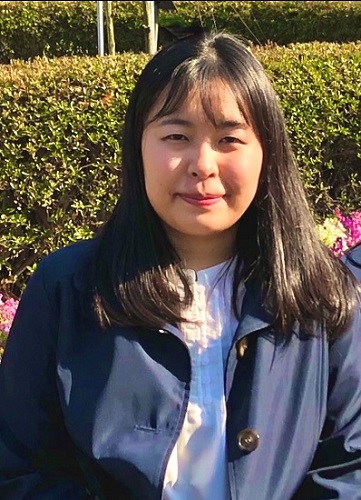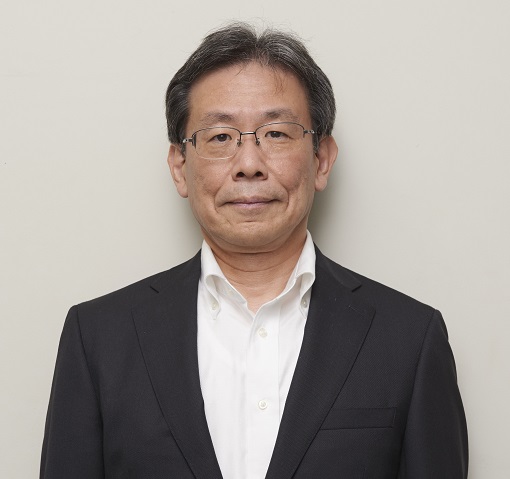Research News: Self-Emergence of Stational Periodic Arrangement of Dual Microdroplets Through Quasi One-Dimensional Confinement
March 20, 2024
Preserving the alignment of microdroplets sheds light on how biological molecules self-assemble and opens possibilities for creating artificial cells
The self-organization of microdroplets in polymer systems due to phase separation holds potential for biological and medical applications. However, retaining the order aligned for long periods of time by keeping the uniformity and distances has been challenging. Now, researchers have generated repetitive alignment of binary cell-sized droplets in a spontaneous manner and preserved them for eight hours by confining a tripolymer solution in a capillary, with implications for improving drug delivery and biological molecule production.
Polymer systems composed of multiple components can spontaneously induce emulsion or microdroplets by mechanical mixing, as an intermediate state of macroscopic phase separation. Unfortunately, the size of generated droplets is nonuniform and their spatial-arrangement is rather random. In addition, they tend to grow larger with time (coarsening). To prevent the change of the microdroplet size, researchers have currently attempted to rapidly lower the temperature, but these efforts can never improve the uniformity of the droplets. If uniformly arranged homogeneous droplets entrapping certain substrates such as DNA and medicines can be produced in a simple procedure, these droplets will serve as useful items in drug delivery and also in creating synthesis cells. This self-organization of microdroplets can provide valuable insights into the self-assembly of biological molecules.
In a study made available online on January 24, 2024, and published in the journal ACS Macro Letters on February 20, 2024, a research team led by Ph.D. student Mayu Shono from the Department of Chemical Engineering and Materials Science at Doshisha University and including Koki Aburatani, Kenichi Yoshikawa, and Akihisa Shioi from Doshisha University and Miho Yanagisawa from The University of Tokyo, found that the homogeneous spatial pattern of microdroplets is spontaneously generated through phase separation of polymer solution along a glass capillary tube. Interestingly, it was shown that the uniformly arranged pattern of the droplets are rather stable for hours. The researchers confined an aqueous tripolymer solution containing polyethylene-glycol (PEG) mixed with dextran (DEX) and gelatin in a glass capillary tube coated with PEG. They observed that over time, the three phases separated, and the DEX and gelatin droplets aligned themselves in a periodic pattern in the PEG phase.
The spontaneous self-assembly arrangement occurred without any exchange of materials or energy in the system, setting it apart from other systems. “We have been performing our study to make clear the underlying mechanism of self-organization in living matter. As a result of this study, we have discovered a novel phenomenon for the generation of self-organized characteristic pattern,” says Ms. Shono.
In their experiments, the researchers prepared three aqueous tripolymer solutions, combining PEG, DEX, and gelatin with distilled water in a 5:4:6 weight ratio. To distinguish the molecules, they labeled the DEX and gelatin with fluorescent markers. These markers emit light of specific colors when exposed to light of certain wavelengths, allowing them to identify the different components in the sample. The solution was then drawn into PEG-coated capillary tubes with diameters of 140 μm and 280 μm.
Due to preferential attachment to the capillary’s surface, PEG separated from the solution immediately. The DEX and gelatin phases, which were repelled from the inner wall, then formed droplets that increased in size. In 40 seconds, the DEX droplets formed a linear arrangement in the center of the capillary, and 120 seconds later, the gelatin droplets did the same. This led to a self-organized, periodic alignment of DEX- and gelatin-rich microdroplets surrounded by a PEG-rich phase, which maintained itself for eight hours after formation.
The essentials of the observed pattern are reproduced through numerical simulation by modifying the theoretical model with the Cahn-Hilliard equation, which describes the time-dependent change of the spatial pattern of phase separation in a mixture of three different polymers.
Achieving stable micropatterns through phase separations is challenging, because, in general, the microdroplets generated through phase transition are nonuniform and they tend to collapse or disappear with time. However, by confining them in a capillary with suitable chemical modification of its inner surface, the researchers were able to preserve the patterns for long periods. “The novel methodology to obtain uniform droplets reported here is superior to current microfluidics in several aspects,” says Ms. Shono.
In the future, such micropatterns can be studied to provide insights into the mechanisms involved in the self-assembly of biological molecules. Furthermore, it can aid in the development of targeted drug delivery and the production of desired macromolecules, such as proteins and nucleotides using protocells. It is to be noted that recently, Ms. Shono together with collaborators, has published an article indicating the successful selective entrapment of genome-sized DNA into the homogenous, arranged droplets (Small, 2023; DOI: 10.1002/smll.202302193). Sharing her concluding remarks, Ms. Shono says, “This scenario for pattern formation coupled with phase separation under confinement may provide a novel viewpoint to uncover the hidden factors for the origin of life and also to reveal the underlying mechanism on the stability of the structure and function of membrane-less organelles in living cells.”

Phase separation of a tripolymer solution in a capillary
Periodic alignment of binary polymer droplets is spontaneously formed via the microphase separation of a tripolymer solution in a capillary.
Image courtesy: ACS Macro Letters https://pubs.acs.org/doi/10.1021/acsmacrolett.3c00689
Image license: CC-BY-NC-ND 4.0
Usage restrictions: You are free to use the entire journal cover as you wish, as long as it contains the entire cover, including the journal title, date, volume, issue number, etc.
Reference
| Title of original paper | Periodic Alignment of Binary Droplets via a Microphase Separation of a Tripolymer Solution under Tubular Confinement |
| Journal | ACS Macro Letters |
| DOI | 10.1021/acsmacrolett.3c00689 |
Funding information
This study was supported by the Japan Society for the Promotion of Science (JSPS) KAKENHI Grants 23KJ2081 (M.S.), 22H01188 (M.Y.), JP20H01877 (K.Y.), and 22K03560 (A.S.), and the JST FOREST (JPMJFR213Y, M.Y.).
EurekAlert
https://www.eurekalert.org/news-releases/1038048
Profiles

Mayu Shono
PhD student , Department of Chemical Engineering and Materials Science.
Mayu Shono is a Ph.D. student at Doshisha University’s Department of Chemical Engineering and Materials Science. She has been carrying out scientific research concerning spatiotemporal self-organization on various hierarchical systems with the scale of nm-cm by combining experimental studies with theoretical analysis. Mayu has published six articles in reputed journals, including Small, Scientific Reports and Applied Physics Letters.

Akihisa Shioi
Professor, Faculty of Science and Engineering Department of Chemical Engineering and Materials Science
Dr. Akihisa Shioi serves as a Professor at Doshisha University’s Department of Chemical Engineering and Materials Science. His research group primarily focuses on projects in the area of chemical engineering, colloid and interface science, physical chemistry, nonequilibrium science, nanotechnology, energy chemistry, manufacturing technology, and natural sciences. Prof. Shioi is a well-cited researcher with over 100 research articles and 10 books to his credit.
Media contact
Organization for Research Initiatives & Development
Doshisha University
Kyotanabe, Kyoto 610-0394, JAPAN
CONTACT US
